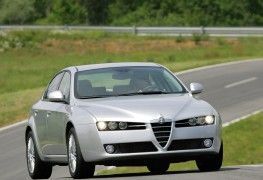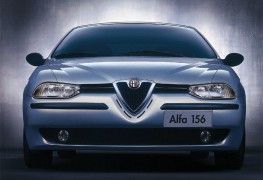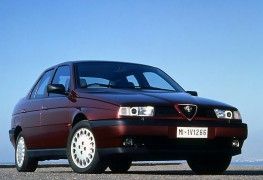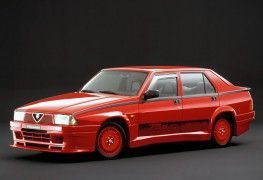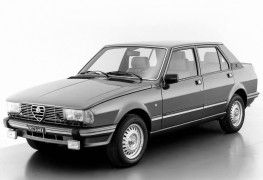The idea, with no other alternative, was clear: to reuse the platform and the propulsion systems of the well-known Giulietta, and to modify the external stamps, the plastic elements and the headlights to create a vehicle with a new look. In order to save even more money, the company's management also decided to keep the Giulietta's doors in their entirety, including their locking mechanisms and window lifts, as well as the laminated front windscreen and other parts.
Some elements would be taken from the recently launched C segment of the firm, the Alfa Romeo 33, either by inspiration or by direct technological transfer.
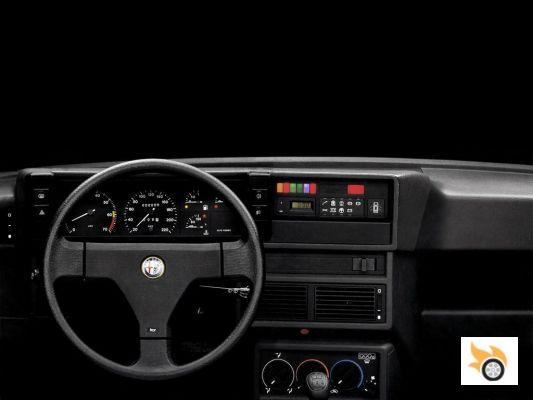
The car's design was entrusted to the Centro Style Alfa Romeo, then directed by Ermanno Cressoni. Cressoni had previously directed the design of the Alfetta, the Giulietta and the 33, and was the creator of what he called "La Linea", a style of "wedge design" coined forwards, premiered in the Giulietta, and which had given much more of itself in the 33.
Cressoni and his team took the doors of the Giulietta, and created an aesthetic element to reinforce the car's forward wedge design and differentiate it from the previous model, based on a dark grey plastic strip that ran along the entire side tint line, from the front headlight to create a spoiler on the rear trunk lid. The effect managed to create the sensation of a car wedged forward, and at the same time served to cover the welds between rear wings and roof arch and achieve an instant visual separation with its predecessor.
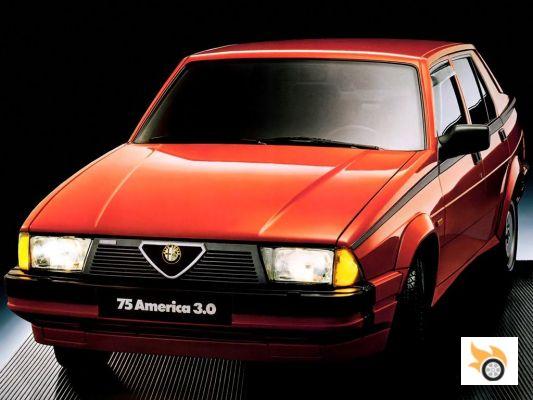
The choice of the design of the boot lid, the lower and more modern headlights and the better compensation of shapes made the 75 a more beautiful product than the previous Giulietta, although it showed some wear and tear of the aesthetic idea introduced by its direct predecessor.
As for the technical basis, there were no changes, as I told you, using double overlapping triangles in the front with longitudinal torsion bars as an elastic element and a transaxle gearbox in the rear with De Dion bridge, direct derivatives of the 1972 Alfetta.
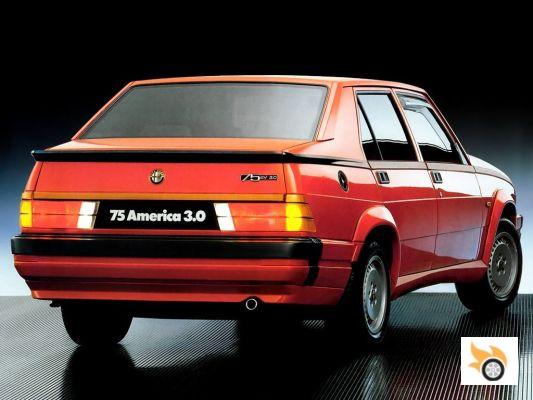
But the age of the technical basis was not an impediment. After all, the longitudinal front engine configuration with the gearbox positioned over the rear axle and the use of torsional bars and De Dion bridge was and remained a perfectly valid solution, better in fact than that of the competition, if well executed.
The cabin was also an almost immediate transfer from the Giulietta, but the dashboard and the distribution of the dashboard elements was modified, sending some of them to the roof, such as the electric window controls, with a clear nod to the aeronautical industry.
To save further costs, the initial mechanical range was the same as that which had been used on the Giulietta, with few changes and three displacements for the four-cylinder twin-cam petrol engines (1.6, 1.8 and 2 litres, with 109, 120 and 128 hp respectively), a turbodiesel boosted to 95 hp, and the appearance of the V6 "Busso" under the front bonnet, with 158 hp at first and with a specific bonnet to accommodate the intake manifold.
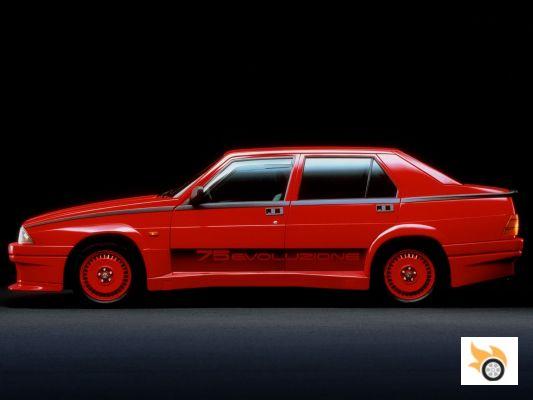
A year after the car's launch, in 1986, the 1.8 turbo with 155 horsepower would appear, using electronic injection, just like the V6 variant. From this turbo would derive a homologation version for Group A, the Turbo Evoluzione, with specific body kit and slight changes in the mechanics to create a car with a displacement equivalent to a three-litre naturally aspirated car, according to WTCC regulations at the time.
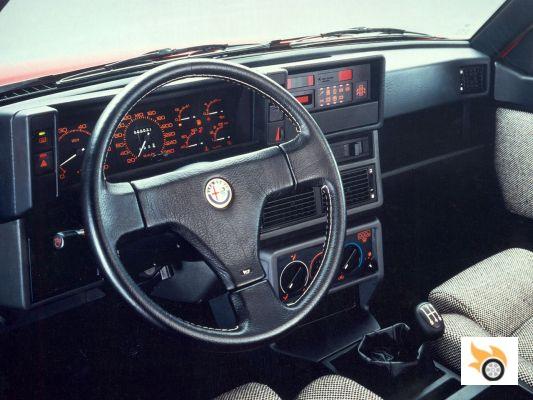
Interior of the 75 Turbo Evoluzione
Although the car was a revolution, its sporting career would not be successful, but that will be discussed at another time. In parallel, little by little the 75 range would continue to evolve and increase its performance with the arrival of new engines with the launch of the two-liter engine and twin spark plug (Twin Spark), with 150 naturally aspirated horsepower.
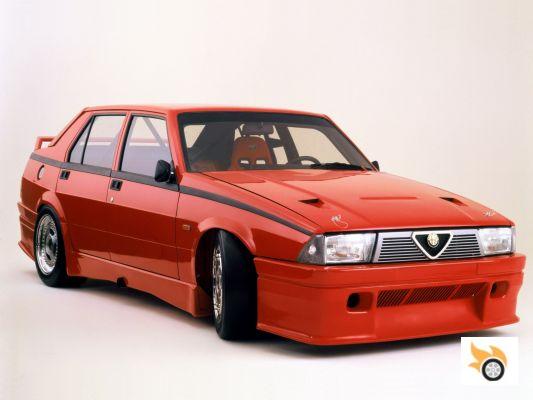
Pre-prototype racing version prior to the launch of the Turbo Evoluzione
For 1988 would come an extensive restyling and new electronic injection engines with 1.8 liters of displacement, as well as improvements in the power of the three-liter V6, which would take it up to about 200 horses (192, to be exact). The commercial life of the product would cease in 1991, to give way to the Alfa Romeo 155, a front-wheel drive sedan developed on the Fiat Tipo platform, which would mean a radical change in the way of understanding Alfa Romeo vehicles.
The reality of the 75 is that, as the last great rear-wheel drive Alfa Romeo to be fully developed before Fiat became a shareholder of the ailing Milanese company, it is fondly remembered. Dynamically it had managed to combine all the technology developed in the Alfetta with an evolution that made it a unique car, designed by and for those who liked to enjoy driving.
Its drawbacks had a lot to do with production quality. Although the car was brimming with advanced and well thought-out technological ideas, and it had to be reliable, since it was after all just a restyling of the Giulietta, the reality was that the defects in the finish were very present, and electronic problems and bad wiring abounded everywhere, which meant a heavy burden for a company that barely had the economic capacity to compete in the market.
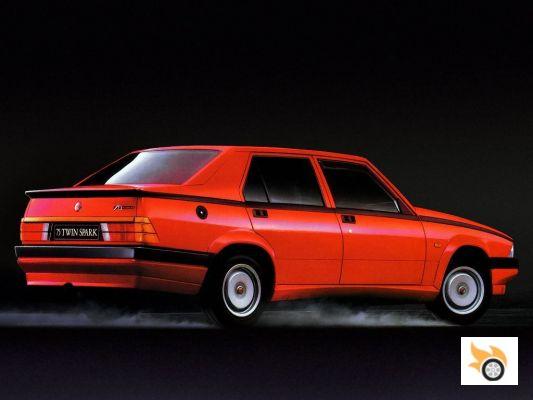
With 375,000 units sold in eight years on the market, at an average rate of 47,000 cars per year, the 75 was as successful, if not more so, than its direct predecessor, but continued to languish in the face of the growing market share of its rivals, and the superior profitability that other manufacturers were getting from these cars.
The general European bad reputation of Italian cars, following the Lancia scandal and its rusting bodywork and the numerous reliability problems of the Alfasud and its corrosion did not help the perception of the 75, which has grown in fame over the years.
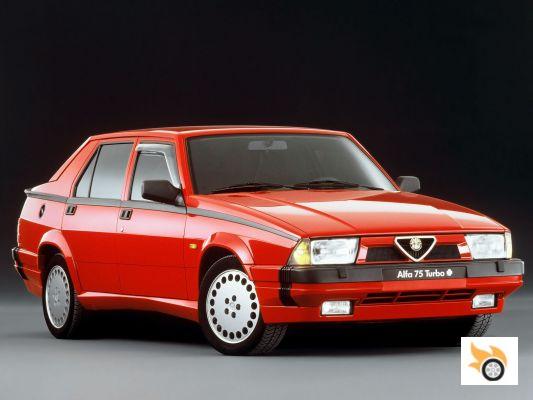
Oddly enough, if you want to drive the most "pure" Alfa Romeo of the last few decades, the most fun to drive and the most faithful to the company's original character, this 75 is probably the best buy, although it's ironic that the much less appreciated Alfettas of almost two decades earlier were still such a direct ancestor that allowed direct interchange of parts between models.
The big task for the new Giulia is to pick up where the 75 left off. We'll continue to cover the history of the 155, 156 and 159 we've had in between. Three generations hated by many alfistas of the eighties.
The return of Alfa Romeo: from the 1900 to the Giulia